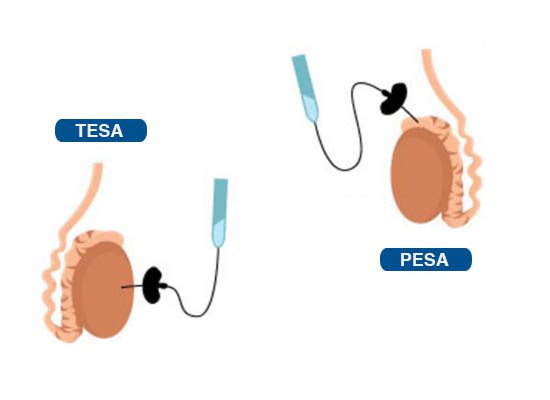PESA/ TESA

In couples where the male partner has no/very few sperms in his semen, and if it is probably due to a blockage in the ducts which carry the sperms (obstructive azoospermia), then PESA/TESA can be done to retrieve the sperms directly from his epididymis (PESA)/testes (TESA).
It is a minor surgical procedure, which is usually done under local anesthesia and doesn’t require hospital admission beyond the duration of the procedure. A small gauge needle and syringe is used to prick either the epididymis or testes and suction applied so as to retrieve the sperms. The number of sperms retrieved in these procedures will never be sufficient for an IUI and hence these are always done in conjunction with an ICSI/IMSI cycle.
The advantages of PESA/TESA treatment
Treatment of male infertility
PESA/TESA can be used to retrieve viable sperm directly from the epididymis or testes in men who have obstructive or non-obstructive azoospermia, allowing for the possibility of achieving pregnancy with IVF or ICSI.
Minimally Invasive
Minimally invasive procedures that can be performed on an outpatient basis with local anesthesia, reducing the risk of complications and allowing for a faster recovery time.
Cost-effective
PESA/TESA may be more cost-effective than other options for male infertility treatment such as surgical sperm retrieval or sperm donation.
Increased chances of success
By obtaining viable sperm directly from the epididymis or testes, PESA/TESA can increase the chances of success in couples undergoing IVF or ICSI.

